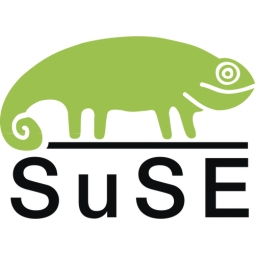
Technology Category
- Infrastructure as a Service (IaaS) - Cloud Computing
- Infrastructure as a Service (IaaS) - Cloud Databases
Applicable Industries
- Electronics
- Semiconductors
Applicable Functions
- Maintenance
- Procurement
Use Cases
- Construction Management
- Infrastructure Inspection
Services
- System Integration
The Customer
Sony Corporation
About The Customer
Sony Corporation is a leading global electronics company, producing a wide range of advanced consumer and professional technologies across computing, audio-visual devices, semiconductors, and electronic components. The corporation operates globally, employing approximately 147,000 people. Sony Italia, headquartered in Milan, is a branch of Sony Corporation and employs approximately 250 people. The company had a significant local server infrastructure to ensure high performance and ease of maintenance for its country-specific systems. However, growth in data volumes and user numbers put significant pressure on these servers, leading to reduced performance and reliability.
The Challenge
Sony Italia, a branch of the global electronics giant Sony Corporation, was facing a significant challenge with its IT infrastructure. The company had consolidated most of its IT infrastructure into two data centers in the U.K, but Sony Italia opted to maintain its local server infrastructure for high performance and ease of maintenance. However, as data volumes and user numbers grew, the servers began to experience reduced performance and reliability. The company had 30 physical servers, but with limited budgets, replacing all of them was not feasible. Additionally, Sony Italia was concerned about the increasing heat output and electricity consumption in the data center. The company had already virtualized about half of its infrastructure, but needed a more cost-effective solution to extend these benefits.
The Solution
Sony Italia turned to SUSE for a solution. The company aimed to complete the virtualization of its infrastructure, but the cost of additional licenses was too high. SUSE provided a solution based on SUSE Linux Enterprise Server (SLES) with Xen virtualization included, which allowed Sony Italia to deploy a Linux distribution with built-in virtualization at no extra cost. Additionally, the SUSE Linux Enterprise High Availability Extension was added to ensure a resilient, clustered solution. Sony Italia installed two new servers running SLES in a high-availability cluster, hosting more than 12 virtual Linux and Windows servers. The company used PlateSpin Migrate to simplify the migration from the old physical infrastructure to the new virtual machines, minimizing business disruption and accelerating the process. Sony Italia plans to extend its use of Xen virtualization on SLES, replacing the current technology on up to 10 physical servers.
Operational Impact
Quantitative Benefit

Case Study missing?
Start adding your own!
Register with your work email and create a new case study profile for your business.
Related Case Studies.

Case Study
Remote Temperature Monitoring of Perishable Goods Saves Money
RMONI was facing temperature monitoring challenges in a cold chain business. A cold chain must be established and maintained to ensure goods have been properly refrigerated during every step of the process, making temperature monitoring a critical business function. Manual registration practice can be very costly, labor intensive and prone to mistakes.
Case Study
KINESYS Semiconductor Factory Automation Software
KINESYS Software provides both Integrated Device Manufacturer (IDM) and Original Equipment Manufacturer (OEM) customers world-class software products and solutions for advanced wafer and device traceability and process management. KINESYS offers state of the art database technology with a core focus on SEMI standards. KINESYS’ challenge was to make back-end processing failure-free and easy to use for clients while supporting licensing models more adaptable to changing industry needs.

Case Study
Predictive maintenance in Schneider Electric
Schneider Electric Le Vaudreuil factory in France is recognized by the World Economic Forum as one of the world’s top nine most advanced “lighthouse” sites, applying Fourth Industrial Revolution technologies at large scale. It was experiencing machine-health and unplanned downtime issues on a critical machine within their manufacturing process. They were looking for a solution that could easily leverage existing machine data feeds, be used by machine operators without requiring complex setup or extensive training, and with a fast return on investment.

Case Study
Cloud Solution for Energy Management Platform-Schneider Electric
Schneider Electric required a cloud solution for its energy management platform to manage high computational operations, which were essential for catering to client requirements. As the business involves storage and analysis of huge amounts of data, the company also needed a convenient and scalable storage solution to facilitate operations efficiently.









